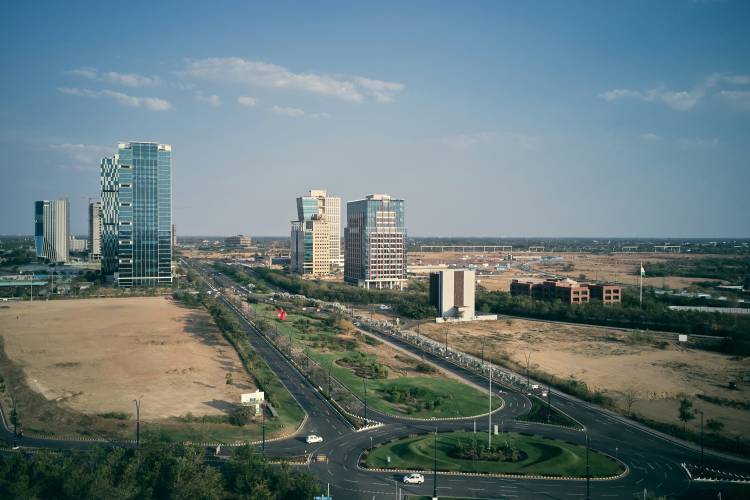
On 9 June 2025 the commerce ministry announced yet another amendment to the Special Economic Zones (SEZs) Rules: land norms cut from 50 hectares to 10, encumbrances relaxed, semiconductor majors serenaded with duty waivers. The media called it the booster shot India’s manufacturing sector needed. The fanfare felt familiar—and so did the unease. After two decades of fiddling, the SEZ experiment has not birthed a Shenzhen; it has spawned a scattered archipelago of exemptions, litigation, and ghost-town factories. The time for incrementalism is over. If India genuinely wishes to become a workshop to the world, it must discard the scaffolding and convert the whole republic into an open, rules-based production hub.
The original allure of SEZs was seductive: acquire land cheaply, wrap it in single-window clearances, then watch exports and jobs mushroom. What followed was, by any yard-stick, the largest land scam in the Republic’s history. A national audit revealed that over 5,000 hectares—about 14% of notified land in six states—was swiftly de-notified and flipped for lucrative real-estate ventures. Developers raised billions of rupees by mortgaging plots meant for factories and spent sizeable chunks on ventures wholly unrelated to manufacturing. Employment shortfalls of more than 90% mocked the original projections. Farmers, Dalits, and Adivasis lost fertile holdings while the promised shop-floors never rose. The policy that was meant to accelerate industrialisation became a vehicle for rent-seeking and speculation.
READ | Premium FMCG is rising — but only in select urban clusters
Reform fatigue in three easy steps
Each embarrassment has bred cosmetic surgery: smaller land thresholds, looser foreign-exchange norms, an AI-centric enclave here, a semiconductor park there. Think-tanks warn that without anchor investors, reliable power, and seamless customs, “vast patches of vacant land within SEZs underline the need for ecosystem development.” Yet the underlying incentive structure—location-specific privileges that invite political discretion—remains intact. The new rules merely reset the chessboard for another bout of arbitrary allotments.
In 2006, Columbia University economist Jagdish Bhagwati called SEZs “scaffolding with which you climb into openness.” Once the building stands, he said, the scaffolding must go. India erected that scaffolding in 2005; 20 years later, it is still climbing in circles. The logical next step is to declare the entire territory an SEZ—effectively universalising the freedoms now rationed behind barbed wire. Make customs-duty exemptions, faster environmental approvals, and self-certification of labour standards the national norm, not a gated privilege. Investors would then choose locations for comparative advantage—ports, talent pools, clusters—instead of chasing arbitrary fiscal sops.
What a nation-sized SEZ would need
Uniform Customs Treatment: Allow duty-free import of capital goods and raw materials for any manufacturer that exports a stipulated share of output, with electronic reconciliation rather than paper-heavy audits.
GST neutrality: Zero-rate intermediate goods and services consistently, ending the maze of refunds that ties up working capital.
Logistics parity: Guarantee 48-hour end-to-end clearance through a common digital window; otherwise tariff-free inputs will rot in demurrage.
Labour and land certainty: Enforce transparent, time-bound land acquisition with market compensation, and adopt uniform labour codes that protect workers while allowing flexible shifts—inside and outside today’s enclaves.
A single investment authority: Merge the Board of Approval, state industrial boards, and half-a-dozen ministries into one empowered agency with appellate oversight from an independent tribunal.
Such a regime would slash the compliance premium that currently nudges firms toward Vietnam or Mexico. It would also remove the arbitrage that tempts politicians to hawk parcels at throw-away prices in exchange for campaign contributions.
Whole-country openness beats piecemeal incentives
Universalising SEZ privileges would not absolve past sins. The Union government must order an inventory of idle plots and cancel leases where no investment has materialised within five years; unused land should revert—after fair valuation—to original owners or state land banks for transparent auction. Developers who mortgaged SEZ acreage for unrelated ventures should face claw-backs of tax benefits and, where warranted, prosecution. Only an unapologetic clean-up will restore legitimacy to industrial land policy and calm farmer resentment.
A nation-wide SEZ sidesteps potential WTO disputes because the benefit is horizontal, not sector-specific. It aligns with India’s ambition to embed itself deeper in global value chains: companies need scale, predictable rules, and proximity to consumers. Fragmented zones deliver the first in patches, the second sporadically, and the third rarely. A unified regime offers all three—and cuts internal logistics costs that often exceed tariff disadvantages abroad.
Successive governments have treated SEZs like Lego bricks—shift a block here, add a concession there—while the world races ahead with whole-economy agreements and near-zero tariff corridors. Land scams have sullied the model, citizens distrust the rhetoric, and manufacturers wonder whether the next waiver will survive the next budget. It is time to retire the experiment. Convert the entire nation into a seamless manufacturing commons, guarded not by customs sentries but by the Constitution’s commitment to equality before law and freedom of trade. Only then will India stop imitating Shenzhen in miniature and start challenging it at scale.
